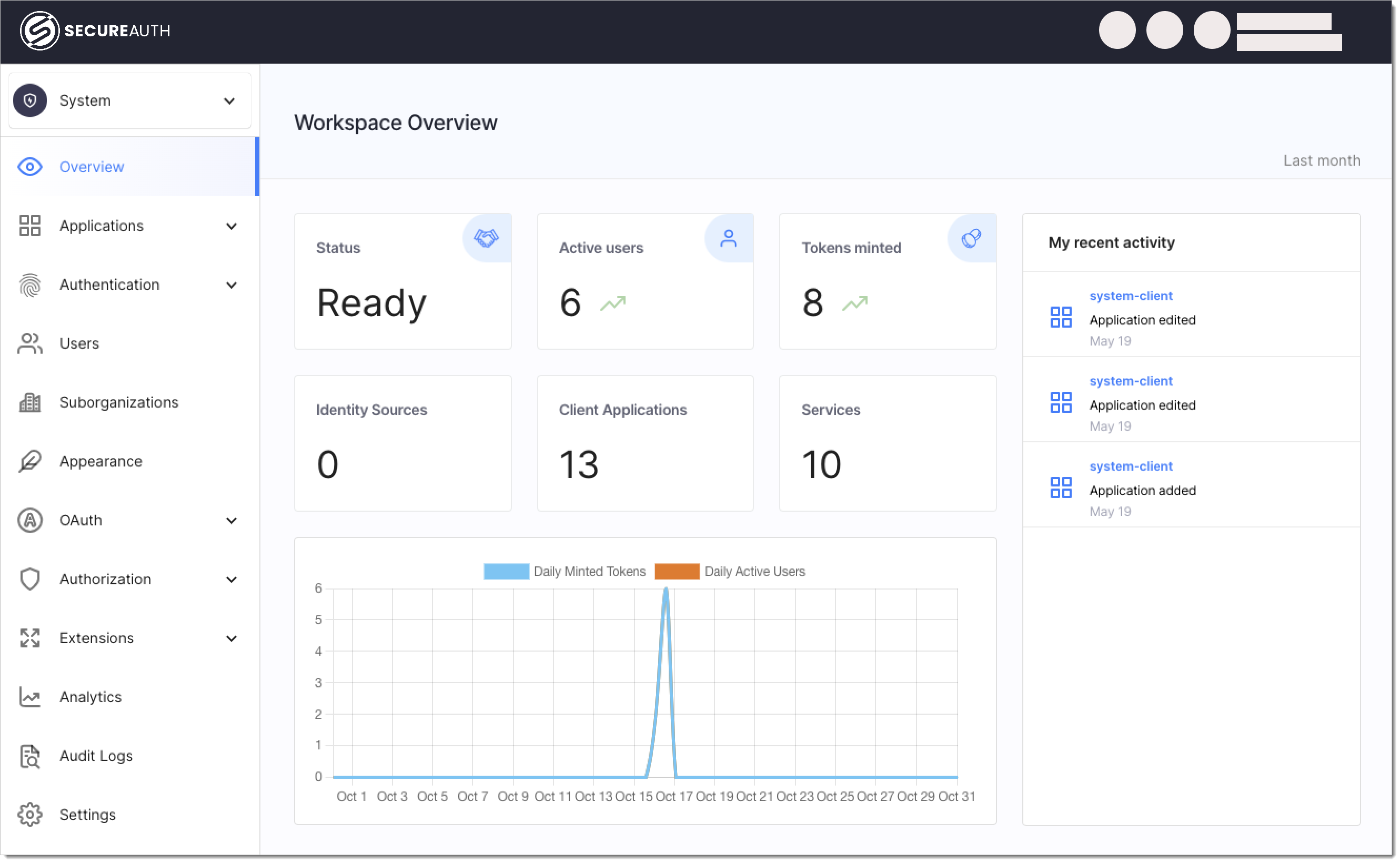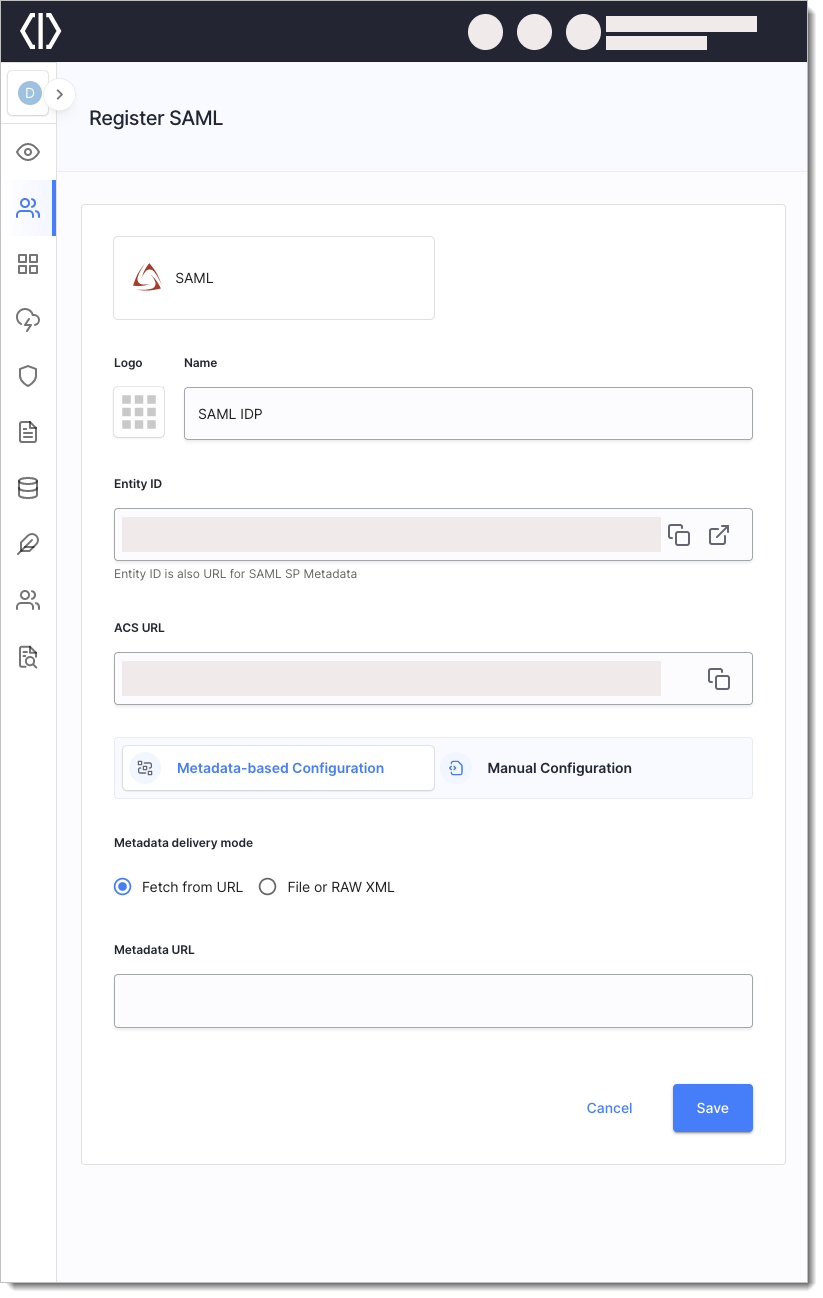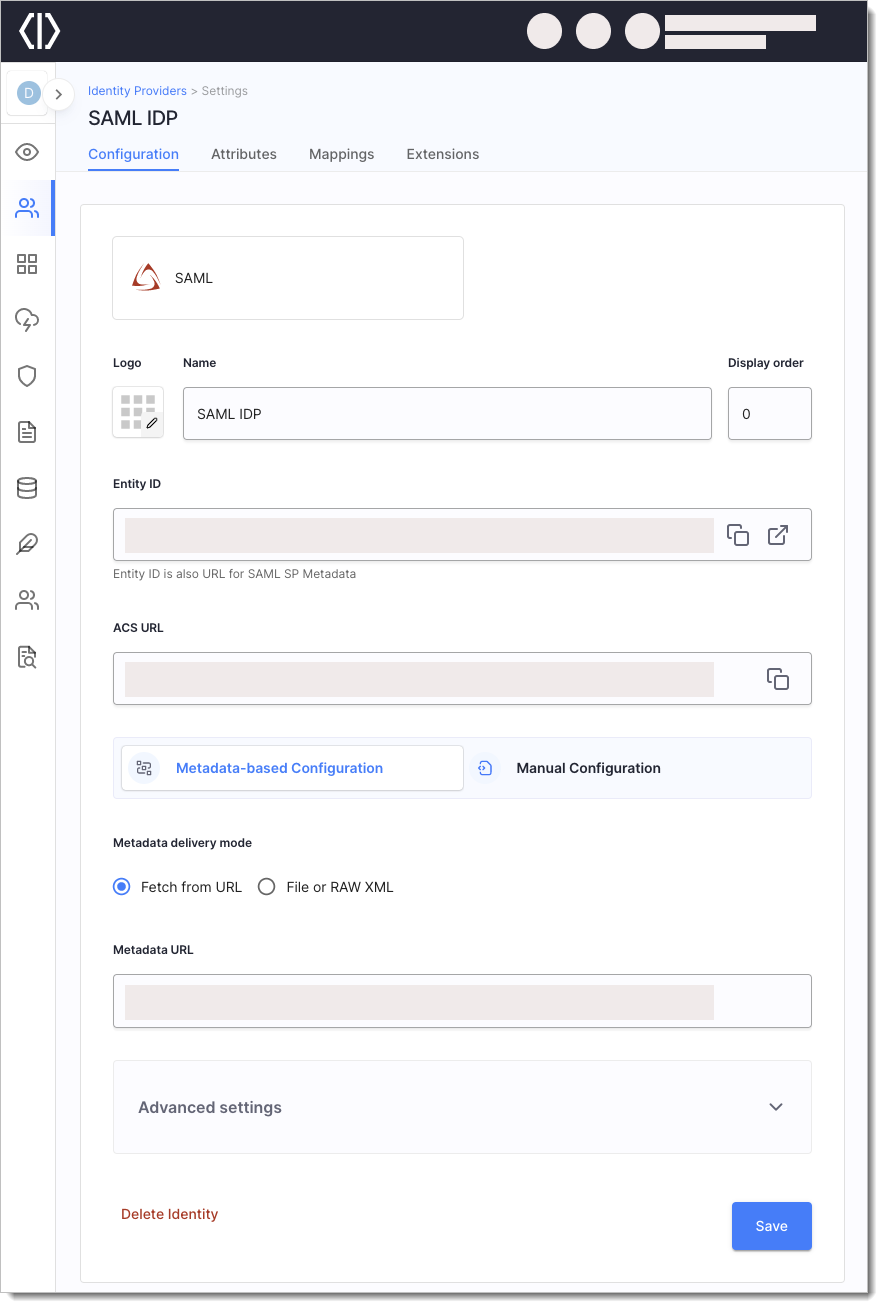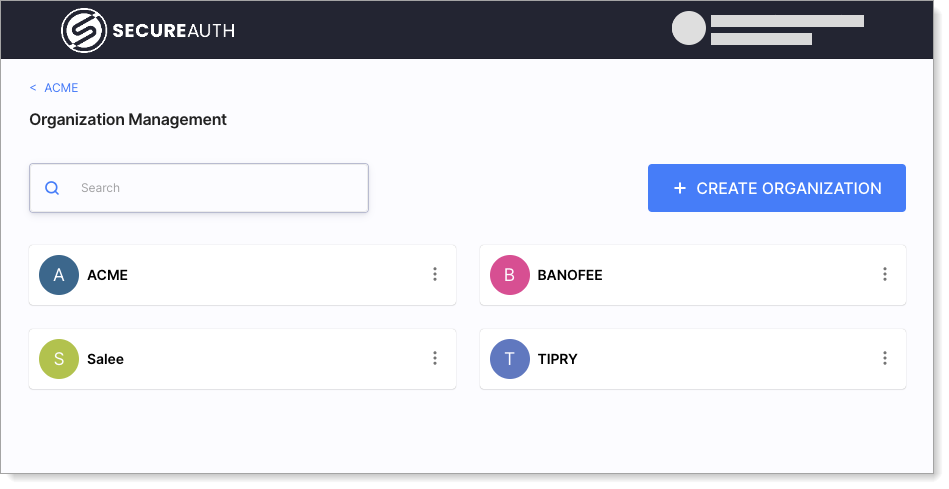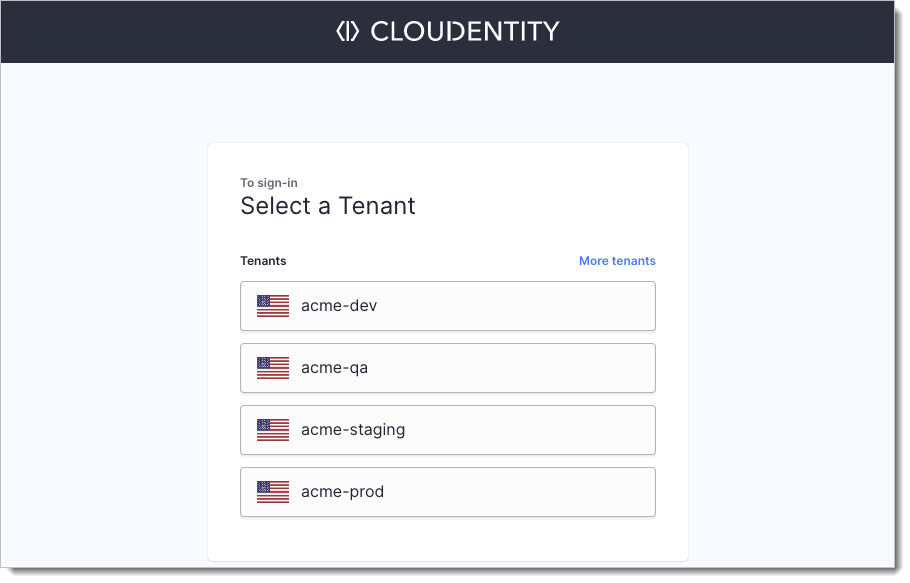What's New
Learn about the latest major additions to the SecureAuth SaaS platform!
23.10 Open Finance Brasil Compliance Updates
We remain dedicated to supporting the latest additions to Open Finance specifications.
implemented DCR adjustments to be compliant with the latest changes to the Open Finance Brazil specification:
recurringPaymentsscope added to Open Finance Brazil workspaces.credit-fixed-incomes,exchanges,bank-fixed-incomes,variable-incomes,treasure-titles, andfundsadded for the regulatoryDADOSrolerecurringPaymentsadded for the regulatoryPAGTOrole
Added a new mechanism to reject OBBR payment consents that has not been authorized within 5 minutes.
This feature has to be enabled in the server configuration:
server: obbr_reject_orphaned_payment_consent_using_scheduled_job: true
20.10 Prepare for Organizations
Acquaint yourself with the latest enhancements integrated into the world of organizations in the Admin platform. Delve into the B2B Delegated Administration Portal to manage organizations effortlessly. Now, you can extend organization management capabilities to your business customers and partners, empowering them to handle organization accounts, add user populations, manage users, and much more with ease.
We've tailored these updates to foster a more collaborative and delegated administration environment, ensuring smooth operations and enriched interactions among your business network. The upcoming global release of this feature underscores its pivotal role in fortifying B2B interactions and administrative delegation within SecureAuth.
With a global rollout coming soon, now is the opportune time to familiarize yourself with these new features, ensuring a seamless transition and readiness to harness the full potential of the enhanced B2B Delegated Administration capabilities. Your proactive engagement with these updates will position you well for the enriched administrative experience that awaits.
If you do not have Organization and Delegated Administration capabilities available in your tenant yet, contact Support.
09.10 New Libraries in Extension Scripts
Added node-env/5 dependencies and make timeouts configurable.
New libraries:
Additionally, bumped the axios library to the newest version.
21.09 Enhancing Password Protocols in Identity Pools: Recent Updates
In just a few days, we've supercharged our Identity Pools with essential password-related features:
Introduce a minimum lowercase character count via the Identity Pool's APIs for robust password policies.
Designate a password expiration timeframe directly within the Identity Pool settings using our APIs.
Activate the all-new Mandatory Password Reset & Change Flags through the Identity Pools APIs.
Stay tuned! These advancements will be integrated into the UI shortly.
06.09 Brazil Open Banking Payment APIs Adjustments
Implemented backwards compatibility adjustments from the Brasil Open Finance Specification for the payment consent APIs.
GET /open-banking/payments/v2/consents/{consentID}does not allow retrieval of a consent created with the v3 endpoint. In this case, an error code ofUSO_NAO_COMPATIVEL_VERSAOis returned with HTTP status 400.GET /open-banking/payments/v3/consents/{consentID}allows consents created with the v2 endpoint to be queried.
5.09 New Audit Events
We've added a couple of new audit events that you can utilize to have a greater control over what changes are introduced within your tenants:
System-level Token Revocation
Service creation, modification, and deletion
25.08 Client Registration Improvements
Changed the admin- / developer-level Create OAuth/SAML Client API to not assign hybrid response modes by default when the application is created using the single_page / server_web / mobile_desktop application types.
16.08 SSO Replaces Authentication Context Caching
Single Sign-On (SSO) Capabilities replaces the authentication context caching. If your organization used this mechanism, switch to Enabling Single Sign-On (SSO) in Identity Providers settings.
16.08 FDX DCR Support
FDX DCR available globally. From now on, the registration_endpoint points to the /fdx/dcr/register instead of the regular /oauth2/register DCR endpoint.
15.08 Improved Default Policies for Passwordless Authentication
Previously, pwd (authentication with a password) was the only allowed amr (authentication method reference) for the NIST-AAL-1/2/3 authorization policies.
Now, the NIST-AAL-1/2/3 authorization policies include otp (One Time Passwords -- Verification Codes) and pop (passkeys) as the allowed amr allowing users to authenticate using these other mechanisms.
Note
The change applies only to new tenants. If you want to use passwordless authentication on your already existing tenant, be sure to check the contents of the NIST-AAL-1/2/3 policies to include additional amr values.
11.08 Single Sign-On (SSO) Globally Available
Organizations can set up persistent user sessions with single sign-on to allow their customers/users to authenticate just once and access multiple apps.
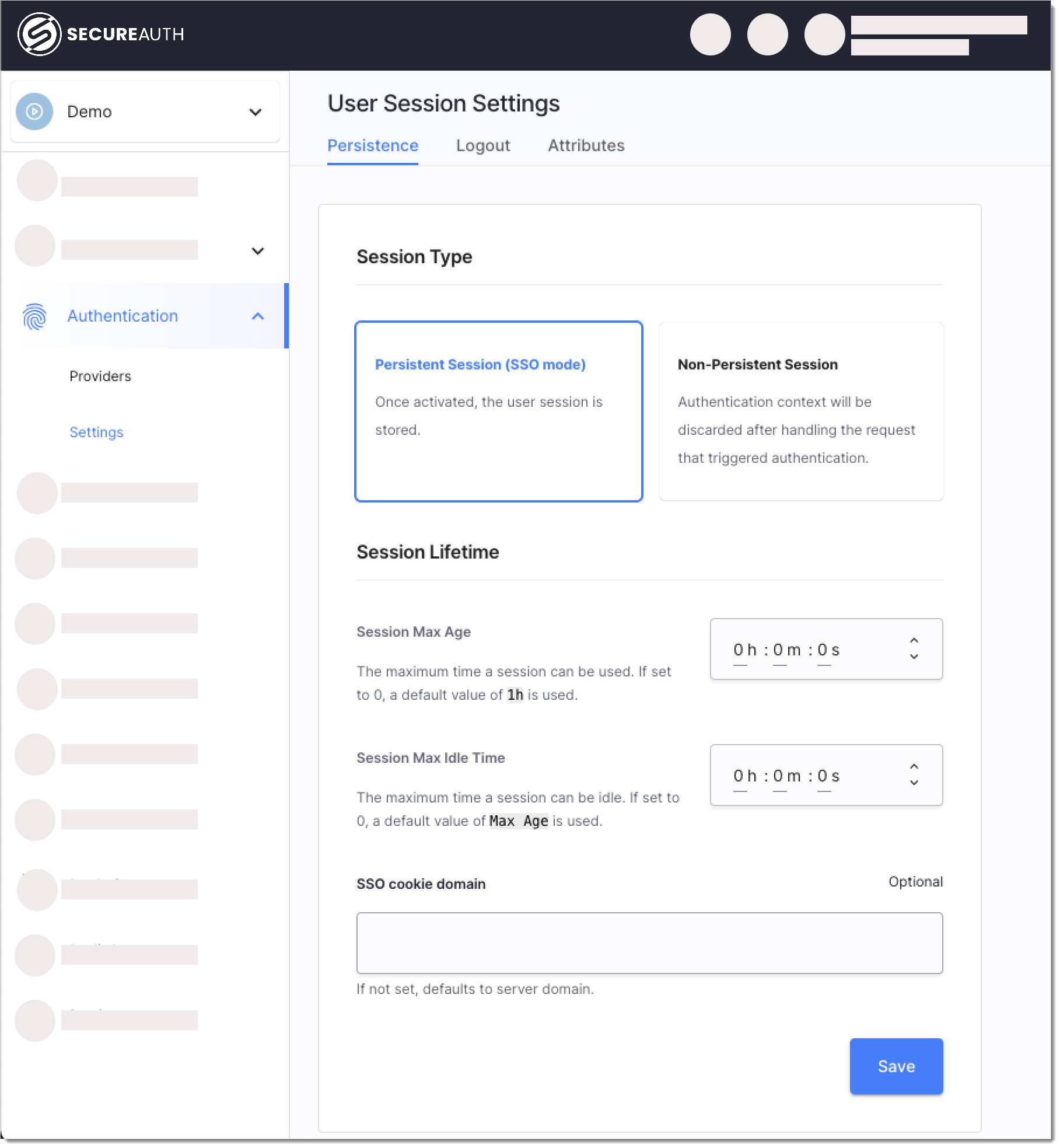 |
04.08 Open Finance Brazil Payment v3 APIs Support
Extended the Open Finance Brazil Consent Management APIs to support requests including v3 payments:
POST /servers/{wid}/open-banking-brasil/consentsDELETE /servers/{wid}/open-banking-brasil/consentsPOST /servers/{wid}/open-banking-brasil/consents/{consentID}/consumeDELETE /servers/{wid}/open-banking-brasil/consents/{consentID}GET /servers/{wid}/open-banking-brasil/consents/{consentID}
When a v3 payment consent is targeted with the delete APIs, it receives a rejection reason JSON:
{
"rejectionReason": {
"code": "REJEITADO_USUARIO",
"details": "O usurio rejeitou a autorizao do consentimento"
}
}02.08 Authorization for Kong Gateway Better than Ever
In order to avoid configuration issues where the Kong authorizer's configuration differs too much from the helm chart values, certificate details need to be provided as part of the httpServer.certificate setting instead of the httpServer setting to closely match what Kong Authorizer supports.
With this change, support for httpServer.certificate.generated_key_type and httpServer.certificate.password settings was also introduced.
20.07 Provision Users Just in Time
Organizations that use third-party Identity Providers to sign in to the Admin platform or web applications protected by the authorization server may enable automatic user provisioning to Identity Pools for:
Unified User Representation
Attribute Augmentation
Operational Attribute Capture
Hybrid Authentication Support
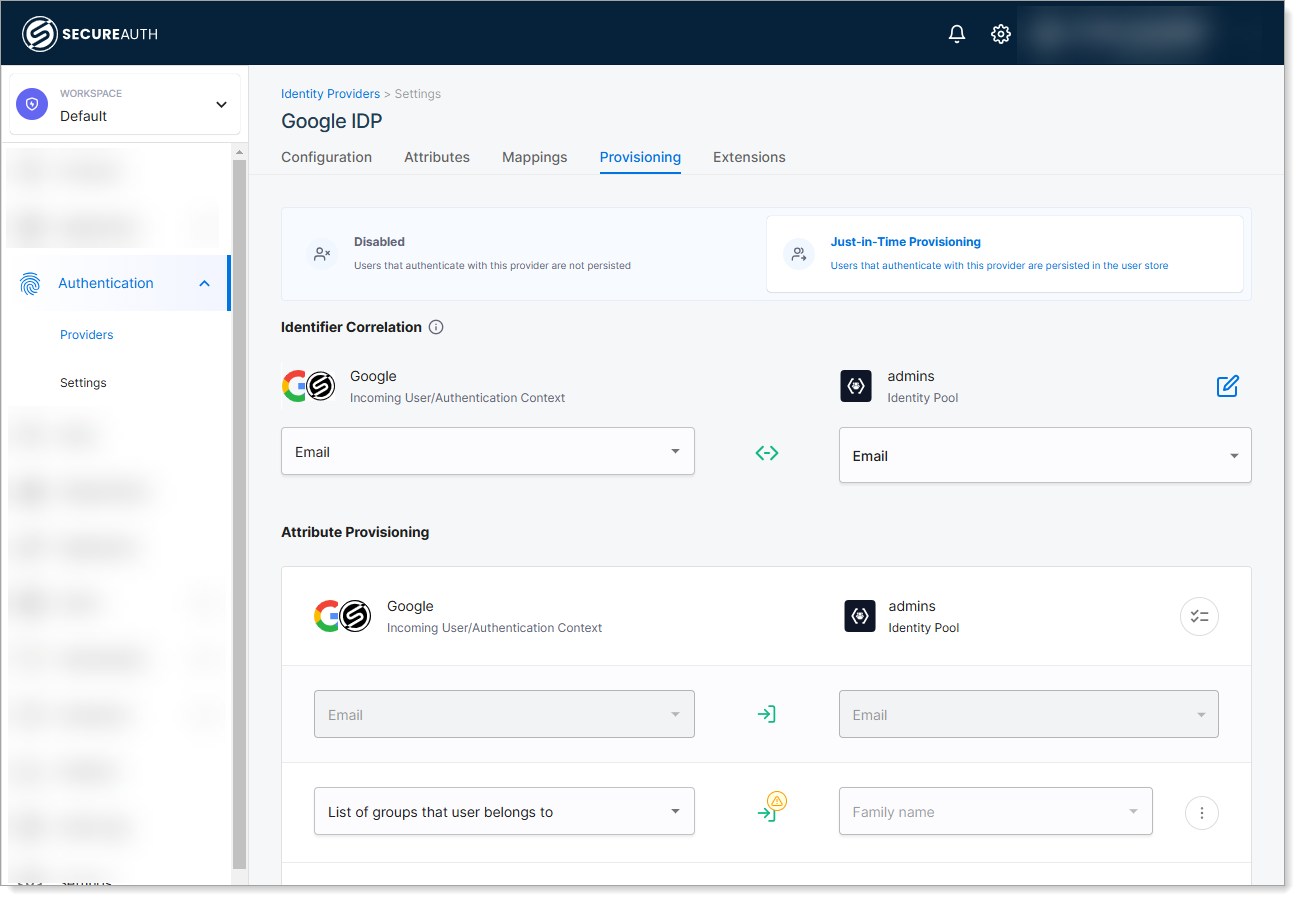 |
19.07 FDX 5.3 API Compliance Profile
We are proud to announce the addition of the FDX 5.3 security and consent compliance profile to our rich portfolio of open finance compliance profiles. It enables financial institutions and open banking platforms to quickly upgrade to FDX 5.3 and achieve instant compliance.
The recently released FDX API 5.3 introduced the requirement for data providers to align the Consent Grant details and OAuth scopes. It may sound like a mysterious technical detail to many but it is critical for interoperability, security, and compliance.
We have addressed this and other consent and OAuth details in our FDX compliance profile. It lets data providers offload the complexity of continuous compliance with evolving FDX consent and API security profile.
18.07 Extended RAR Support
Add new set of APIs (create, get, update, delete and list) for new entity authorization details. The feature is currently available behind the feature flag.
Authorization detail is an object defined in the OAuth RAR spec used to specify fine-grained authorization requirements. An admin can define multiple authorization details within a workspace. Authorization detail has a reference to a service and must have unique type. Additionally for every authorization detail schema must be defined, for example:
{
"type": "payment_initiation",
"locations": [
"https://example.com/payments"
],
"instructedAmount": {
"currency": "EUR",
"amount": "123.50"
},
"creditorName": "Merchant A",
"creditorAccount": {
"bic":"ABCIDEFFXXX",
"iban": "DE02100100109307118603"
},
"remittanceInformationUnstructured": "Ref Number Merchant"
} A minimal schema must have at least a type property:
{
"properties": {
"type": {
"description": "type",
"type": "string",
"minLength": 1
}
},
"description": "basic user data",
"type": "object",
"required": [
"type"
]
} 11.07 Get User by Identifier or Address API
Added the Get User Details by Key API allowing to retrieve user information by user's identifier or a verified address.
28.06 Open Finance Brazil APIs Updated
Updated swaggers and models in accordance with the newest release candidate for the Open Finance Brasil consents API.
26.06 Easily Connect SAML IDPs
We added a bunch improvements to the process of connecting SAML IDPs:
You can switch between two configuration options: Metadata-based Configuration which enables us to fetch your IDP configuration from a metadata endpoint, and Manual Configuration which enables you to configure the IDP manually.
To enhance the IDP (Identity Provider) configuration process, we have included two new fields to the SAML IDP.
The Entity ID field allows you to specify the unique identifier for the IDP entity.
The ACS URL field enables you to input the Assertion Consumer Service URL for the IDP. These additions provide more flexibility and customization options when setting up IDPs in our application.
IDP Connection | IDP Configuration | ||
|---|---|---|---|
|
|
12.06 Configure Custom Token and Code TTLs for Client Apps
You can now configure custom Token and Code Time-to-Live periods for client apps that take precedence over the TTLs you apply at the authorization server level (Settings >> Tokens >> TTL). Learn how.
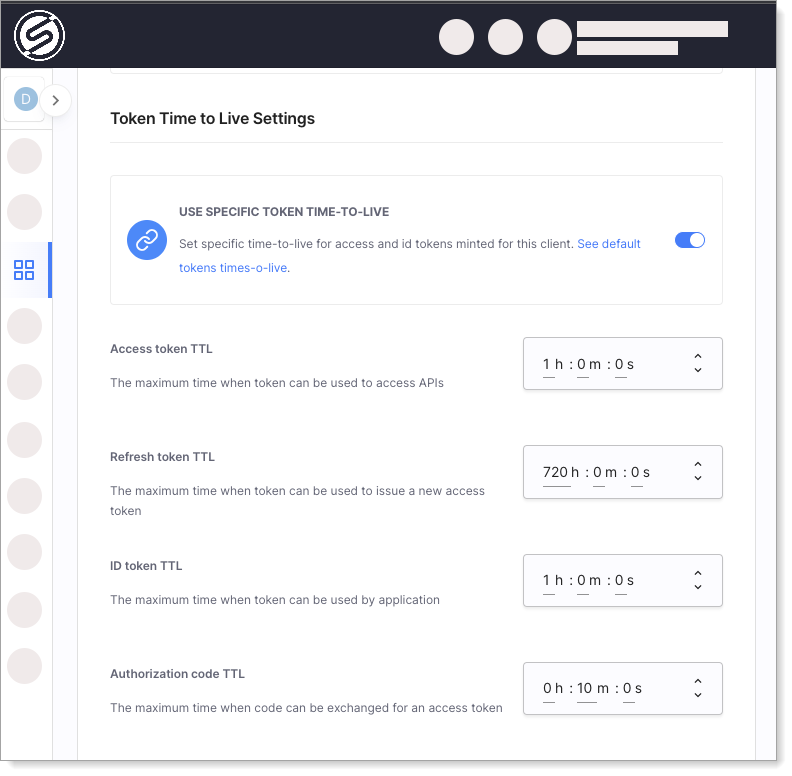 |
12.06 Enrich Token Claims for Client Application
It is now possible to assign Token Claim Enrichment Extensions directly to a client application. Extensions attached at the client level affect only the client they are assigned to and are executed after Extensions at the server level (if there are any). Learn how.
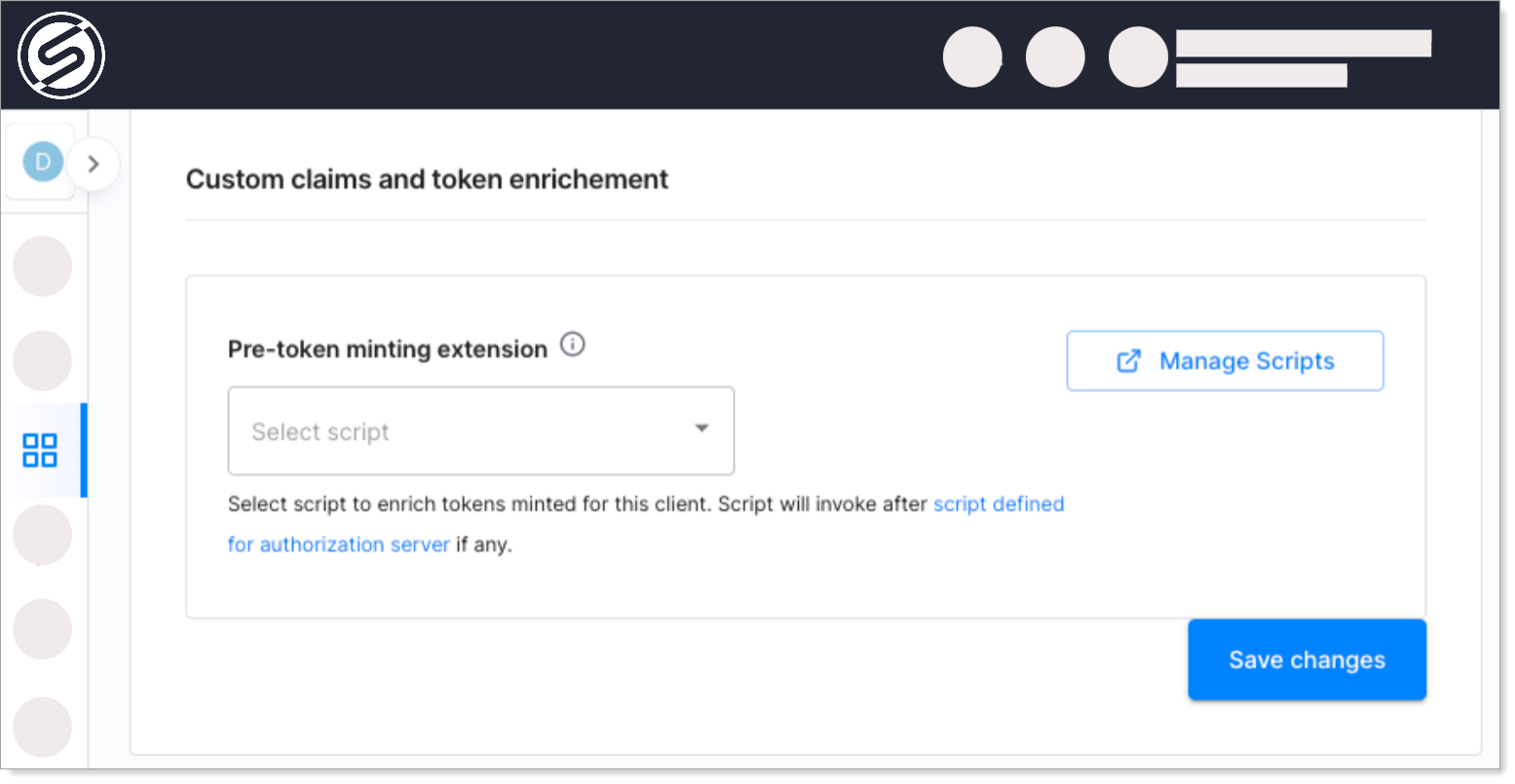 |
30.05 B2B/Delegated Administration Portal Coming Soon
User Management | Organization Management | |
|---|---|---|
|
CIAM B2B Portal allows to administer organizations and their user populations without any technical hassle. You can delegate organization administration to your partners/customers and empower them with the self-management of users, configuration of sign-in options, roles configuration, and application permissions.
B2B/Delegated Admin Portal Availability
We are continuously striving to provide an exceptional B2B/Delegated Administration Portal, and to ensure a seamless experience, it is currently accessible through feature flags. To leverage the capabilities of the portal, contact Support.
15.05 Improve Your User Experience with Single Sign On (SSO)
Single Sign On Authentication (SSO) allows your users to log in just once to an application connected to CIAM and use the resulting session as a proof of authentication to all applications in the workspace for as long as the session is valid, thus removing the need to re-authenticate when the user wants to use another app.
SSO can be configured in a workspace Authentication > Settings > Persistence view.
Currently, the SSO feature is behind a feature flag. To enable it, contact Support.
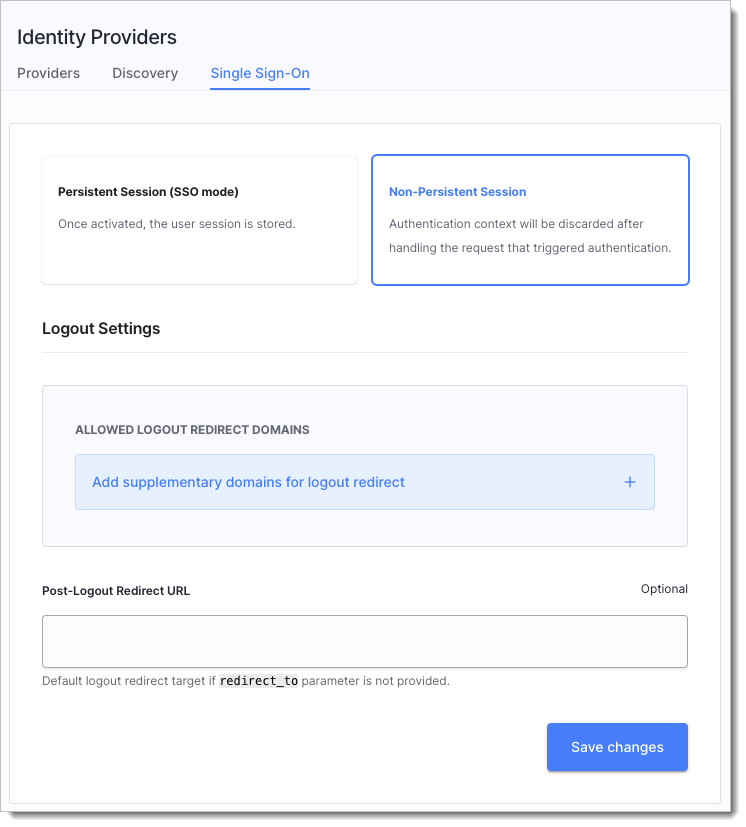 |
08.05 FAPI 2.0 Certified
FAPI 2.0 is an API security profile based on the OAuth 2.0 framework suitable for protecting APIs in high-value scenarios. 4th of May, we bacame the first CIAM platform to be certified! You can read more about FAPI 2.0, what it introduces, how it differs from FAPI 1.0 and Advanced, and more in the Exploring Financial Grade API 2.0 blog post. If you need a FAPI-grade authorization server, we got you covered. Just create a workspace of the Fintech and mission-critical applications profile, and choose the FAPI specification version you need to comply with.
We offer an authorization server that meets FAPI-grade requirements. Fintech and mission-critical application workspaces can be tailored to comply with your preferred FAPI specification - FAPI 1.0, FAPI Advanced, or FAPI 2.0. You have the option to modify your existing workspace settings to adhere to FAPI requirements or create a new Fintech and mission-critical applications workspace. When creating a new workspace, simply select the desired FAPI profile to ensure compliance.
Please note that FAPI 2.0 is still in the draft phase, but certification is possible with the Implementers Draft FAPI 2.0 specification. Be aware that until FAPI 2.0 becomes final, we do not assume responsibility for FAPI 2.0 workspace settings, and we may introduce breaking changes as the FAPI 2.0 specification is refined.
03.05 Added OpenTelemetry Support to All Authorizers
Authorizers now offer full support of OpenTelemetry -- an observability framework that combines metrics, traces, and logs to monitor and analyze the performance and behavior of distributed systems. Tracing data, a key component of OpenTelemetry, consists of interconnected spans that represent individual units of work within a request, such as function calls or external service requests. Use it to analyze performance, diagnose errors, or for monitoring and alerting purposes.
29.03 One Token To Rule them All - New dcr_manage Scope In OAuth2 Service
One Ring to rule them all, One Ring to find them, One Ring to bring them all, and in the darkness bind them... Wait, that's not it. We've added a new dcr_manage scope to the OAuth 2.0 service. This new scope provides clients with access tokens containing it to access and call DCR (Dynamic Client Registration) management endpoints. These endpoints include GET, PUT, and DELETE methods for any dynamically registered client within the same workspace.
In simpler terms, this DCR extension is a powerful feature that enables a "one token to manage them all" approach to dynamically registered clients. With the addition of the dcr_manage scope, clients can now easily access and manage all dynamically registered clients with a single access token. This eliminates the need for multiple access tokens for different clients and allows for a more streamlined and efficient management process.
This feature also supersedes other settings like registration access tokens. Clients can now use their access token with dcr_manage scope to manage registered clients without having to generate and use multiple access tokens for different purposes.
15.03 Multiple Tenants Per Email Account and Login Improvements
Since now, you can register multiple tenants under one email account! To cater to this multitenancy improvement, we adjusted the way you log into the Admin platform:
You will be asked for your tenant name and within which region your tenant is.
You may notice that we may have already suggested some tenant names for you! We provide you with a list of tenants based on the cookie we use when you access the Admin platform. If you do not see the tenant you are looking for on the list, just select More tenants and provide your tenant's name and region.
Users that did not log in during the last 30 days and forgot their tenants' names may use the Forgot? option in the Provide Tenant Details view.
You will be asked to log into your account.
Notice that from now on, if your account has username or phone number provided, you can use them to log in instead your email!
Old Way | This Is The Way | ||||
|---|---|---|---|---|---|
One tenant per email | Multiple tenants per email | ||||
|
|
10.03 Configurable Registration Access Token TTL
Previously, the DCR registration token was always valid for 30 days. Now, the TTL is configurable and can be extended. Optionally, the token expiry can be disabled.
You can configure DCR Registration Token settings in your workspace OAuth > Authorization Server > Client Registration view.
06.03 Extend User Authentication Process with Custom Applications
We offer two options for extending the user authentication process: Post Authentication scripts and Post Authentication custom applications.
The Post Authentication script allows custom JavaScript code execution upon user's authentication, enabling the modification of certain authentication context attributes, enhancement of the user context, or triggering custom API calls.
The Post Authentication custom application option allows connecting a Third-party Application. This application can interrupt the authorization flow after the user logs in using an IDP, redirecting the user to a custom, business-specific application hosted by the customer. This application requires users to complete additional processes or interactions as needed during the authentication process before they can proceed to granting their consent to the client. When the user completes this third-party flow, they are redirected back to the original authorization flow.
28.02 Offline Approval for FDX Dynamic Client Registration
We're excited to announce that our FDX implementation now supports offline approval of Dynamic Client Registration.
With our DCR offline approval feature, you can register a client app even if it's currently inactive. This is ensured by the fdx_client_status parameter. Its values are mapped with the FDX client_status values, whereas mapping is based on the client app's ability to perform token flows. The mapping is as follows:
|
| Notes |
|---|---|---|
Approved, Tentative |
| The client app can perform token flows |
Pending, Rejected, Inactive |
| The token cannot be issued for the client app |
Initially, the FDX client app status is set to Active.
You can change the initial client status on UI within the tenant under the required workspace OAuth > Authorization Server > Client Registration > Enable Dynamic client registration: ON > DCR Client's Initial State:
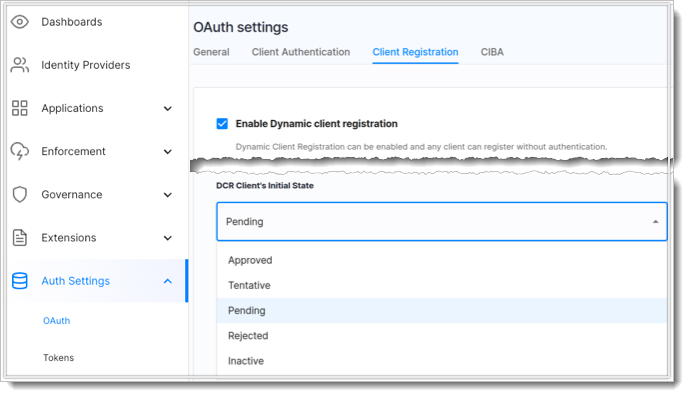 |
You can also change the status of the registered client app with the new Update FDX Client's Status PUT endpoint.
This endpoint requires an access token with the update_client_status scope. Pass the required status in the request body, for example: {update_client_status: "Approved"}. No restrictions to status transition are applied.
Our enhanced FDX implementation and DCR support provide ways for a faster, more secure integration between financial institutions and third-party providers. Benefit from the convenience and security of our FDX and DCR solutions providing compliance with FAPI standards for secure API interaction with consumer consent.
20.01 Passwordless Authentication Support
Passwordless authentication is a way of protecting the user credentials by replacing the traditional, knowledge-based authentication (such as entering a password you know) to a possession-based authentication (such as confirming the login with your fingerprint on a device you own). The possession-based approach has a number of advantages, primarily:
There is no password so you can't give it away to a phishing site
Your credentials are never stored on the server, in fact, they never leave the device used for authentication
The FIDO alliance is an organization trusted with maintaining the standards for passwordless authentication.
When authenticating with SecureAuth Identity Pools, you have the option to use a Passkey instead of relying on passwords.
16.01 Breaking Change: Pagination In Identity Pools List APIs
Pagination has been introduced when calling the List Identity Pools API. Callers can filter by id or name of the Identity Pool, search before or after its id, sort by id or name, order ascending or descending, and limit the number of returned results.
Callers who wish to use this API to return all Identity Pools should either set a high limit or enable pagination in their UI.
09.01 Token Endpoint Authentication Signing Algorithms Are Now Configurable On The Server Level
Token endpoint authentication signing algorithms are now configurable on the server level via the token_endpoint_auth_signing_alg_values parameters, for example:
{
"token_endpoint_auth_signing_alg_values":
[
"HS256",
"RS256",
"ES256",
"PS256"
]
} Depending on the server security profile, only specific algorithms are allowed, for instance, for FAPI-based profiles the only supported algorithms are ES256 and PS256. When a client is dynamically registered in Open Banking Brazil workspace with the insurance industry, if the token_endpoint_auth_signing_alg is not explicitly provided, it is set automatically to PS256.
token_endpoint_auth_signing_alg on the client side should no longer use none value as per the OIDC specification.
Instead of none, the value should be empty or set to one of the algorithms supported by the server (see token_endpoint_auth_signing_alg_values_supported in the well-known page). none is still accepted but it's converted to an empty string.
2022
26.12 Configuration Export/Import
We value your feedback and are always looking for ways to improve our platform. In response to customer requests, we've made enhancements to our configuration export and import capabilities to improve performance.
We've updated our import and export APIs to exclude dynamic and non-configuration objects, which speeds up the process. To provide the option to still retrieve these objects, we've introduced a new with_data query parameter to the Export Global Tenant Configuration Root API and the Export Tenant's Configuration System API . When with_data is set to true, these APIs will include dynamic and non-configuration objects in the exported configuration:
Consents
ConsentActions
ConsentGrants
ScopeGrants
PrivacyLedgerEvents
OpenbankingUKConsents
OpenbankingBRConsents
OpenbankingFiles
CDRArrangements
OpenbankingFDXConsents
Before the change, those fields were populated by default.
16.12 Brand Login Pages, Consent Pages, 2FA Screens, and Much More
We are excited to announce the release of custom themes. Administrators can now create and assign custom appearance themes to CIAM components to brand them according to their company style. This includes the ability to customize consent pages displayed to users during authorization flows, login pages for users that authenticate with CIAM Identity Pools, the Demo Application, Error Pages, and more. The built-in editor provides an IDE-like experience and preview capabilities for creating and styling your template HTML code. Branding your components can provide a number of benefits for your business. It helps to establish and maintain a consistent visual identity, which can improve recognition and trust with your customers, partners, and employees. Overall, branding can help to differentiate your business and improve its overall image and reputation.
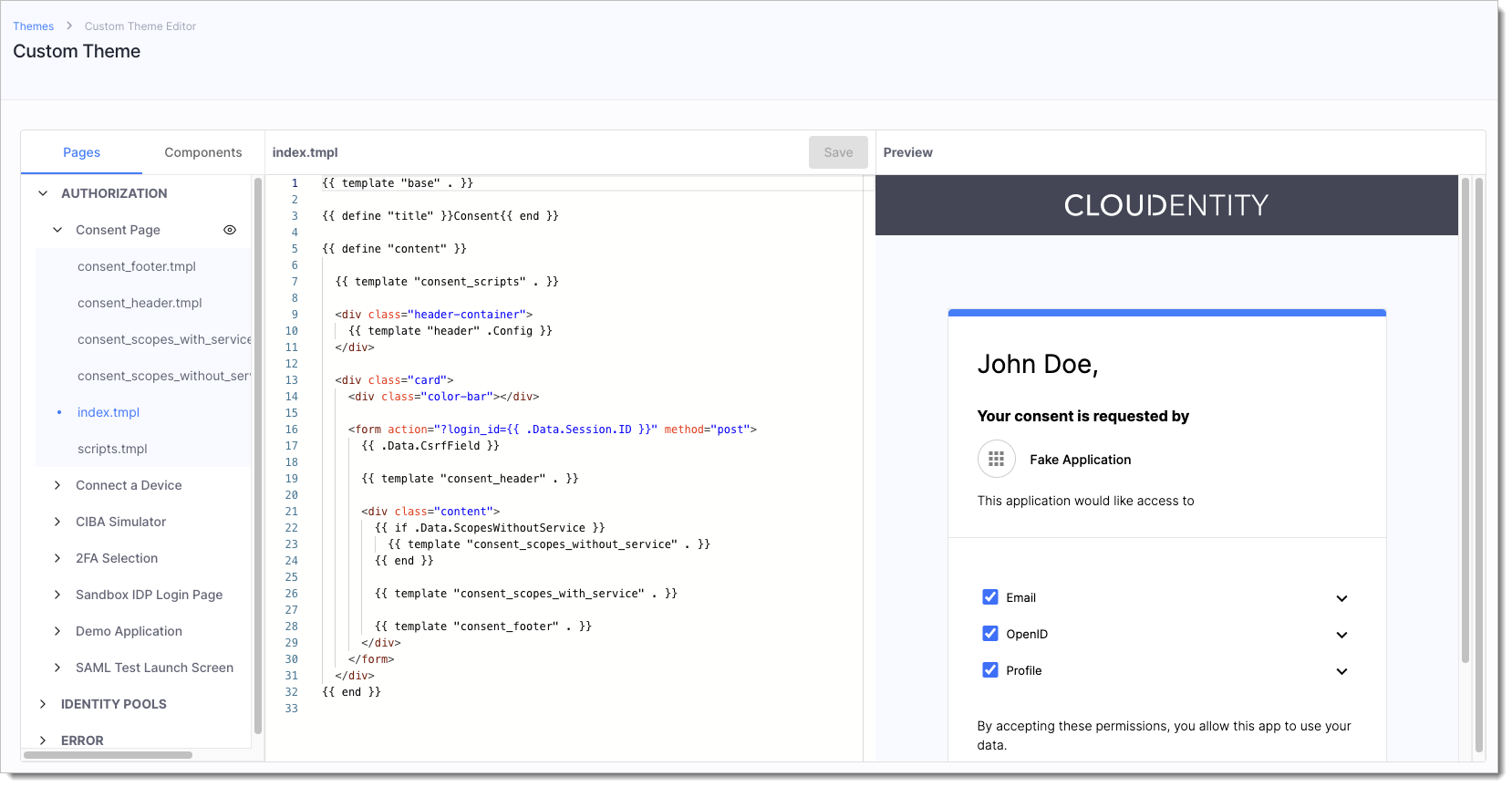 |
07.11 Utilize Improved Identity Pools
We added a bunch of new improvements to Identity Pools:
User credentials now include the
expiresAtparameter. Once the password expires, it fails verification, and the user needs to either reset it or change.Password expiry can be utilized when migrating users from external identity sources without their passwords defined. Just provide no password and set the expiry date for a date in the past to trigger password change for your users.
Added option to set Preferred Authentication Mechanism useful when both password and OTPs are enabled for an IDP. Now, it is possible to pick the default one that shows up on the login screen.
Admin platform users can now manage user identifiers and addresses within Identity Pools. Admins can add new identifiers with the email, mobile, UUID types, or even identifiers coming from external sources. Additionally, admins can add new verifiable email or mobile addresses for users and define whether the address is verified or not.
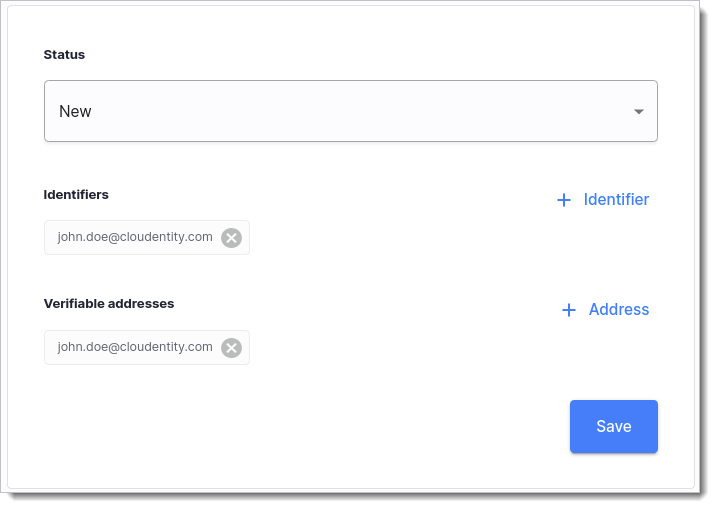
Refactored Identity APIs to enable developers to extend them more easily.
26.10 Manage Users' Identifiers and Addresses in Identity Pools
SecureAuth Platform admin users can now manage user's identifiers and addresses within SecureAuth Identity Pools. Admins can add new identifiers with the email, mobile, UUID types, or even identifiers coming from external sources. Additionally, admins can add new verifiable email or mobile addresses for users and define whether the address is verified or not.
 |
24.10 Cache Request Responses Within SecureAuth Authorizers
We improved SecureAuth authorizer's integration with the Open Policy Agent's REGO language, so that the caching features in the REGO http.send() function are effective. You can now use the following fields in your REGO policies:
cache- Cache HTTP response across OPA queries. Default: false.force_cache- Cache HTTP response across OPA queries and override cache directives defined by the server. Default: false.force_cache_duration_seconds- If theforce_cachefield is set totrue, this field specifies the duration in seconds for the freshness of a cached response.
In SecureAuth v2.8.0, the authorizers provide an inter-query cache that persists across policy validations, which enables calls to the http.send() method to access cached responses from previous policy validations. The cache is recreated on each API discovery cycle, so the duration of cached responses is limited by the authorizer's discovery interval.
{{< dropdown-content title="Authorizer's API discovery configuration" iscode="true" datalang="yaml" >}} discovery: enabled: true # when true, API discovery is enabled interval: 30s # how often discovery is performed {{< /dropdown-content >}}
The cache size can be configured via the rego_inter_query_cache_size configuration setting for SecureAuth authorizers:
enforcement:
rego_inter_query_cache_size: 1000000 # maximum size for the Rego inter-query builtin cache
20.10 Full Support for Brazilian Open Insurance
SecureAuth platform now fully supports Brazilian Open Insurance (OPIN) initiative.
The Open Finance Brazil type of workspace is configured to provide industry-specific OPIN configuration, for example, OPIN scopes.
Added permission mappings and groups validation required by OPIN. It can be used in the consent creation endpoint.
Added the following endpoints from the OPIN spec for consent creation and management:
Create Insurance Data Access Consent
Get Insurance Data Access Consent
Delete Insurance Data Access Consent
Added DCR requirements support coming from the the Open Insurance specification. This includes:
Requirement of using mTLS for DCR registration
Software statement parsing and validation for the model provided by the specification
Software role to scope mapping during DCR
Extended mTLS aliases in the OAuth wellknown endpoint to include the backchannel authentication endpoint when Client Initiated Backchannel Authentication method is enabled as required by the OPIN specification.
Add an option to configure supported
acr(Authentication Context Class Reference) values in the authorization server's OAuth advanced settings. Workspaces now use whatever is configured in the settings instead of an internal hardcoded list.
14.10 Bunch of New Articles for Financial Data Exchange (FDX) Compliance
We have added a whole lot of new articles on complying with the Financial Data Exchange (FDX) standards body! Check out brand new solution guide. Learn how to build consent pages that comply with the FDX requirements, how data providers can protect their APIs with SecureAuth, and much more:
21.09 Password Policies for Identity Pool Users
Times, when qwerty1234 was thought to be a safe password, are long gone! Make sure that your users fulfill all of the requirements for safe passwords with SecureAuth password policies. Such policies enable the Identity Pool administrators to specify, for example, the minimal length of a password, number of special characters, and many more.
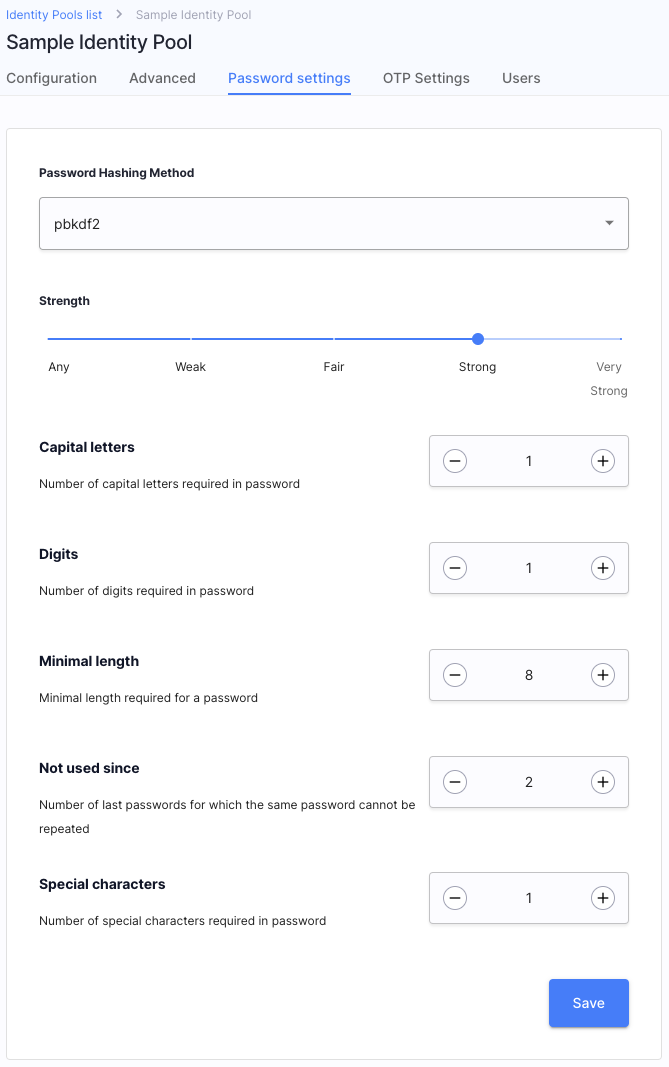 |
16.09 Integration with Kusk API Gateway
Kusk API Gateway enables developers to build, validate, deploy, and monitor REST APIs based on Envoy Proxy running on your Kubernetes cluster. Do you know what else can be run in a K8s cluster? That's right! SecureAuth authorizers! It is now possible to integrate the Kusk Gateway with SecureAuth and protect the APIs deployed behind your gateway with advanced access control measures. The integration is based on the SecureAuth Standalone Authorizer.
 |
1.09 Event-Based Notifications Using Webhooks
With SecureAuth Extensions, you can set up event-based notifications in order to subscribe third-party applications to important events captured by our platform. You can, for example, notify an external CRM system that a user granted their consent for an application registered within your Open Banking workspace, and more.
